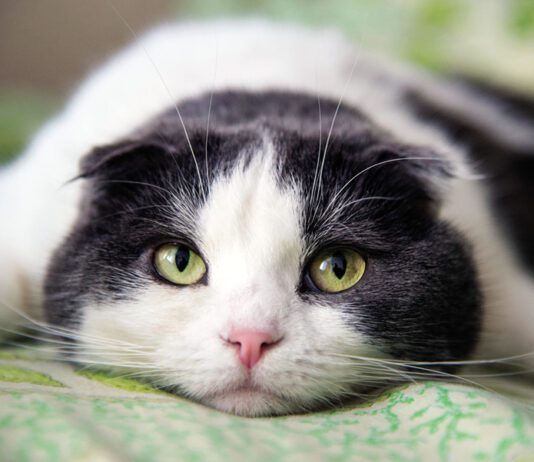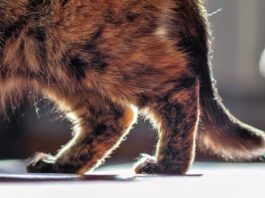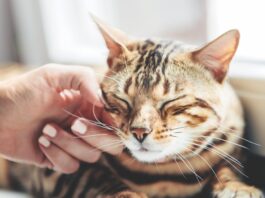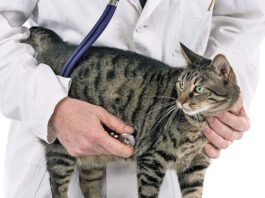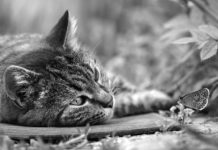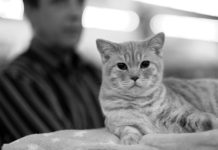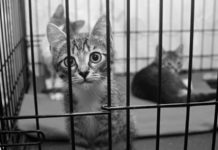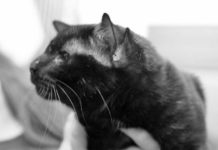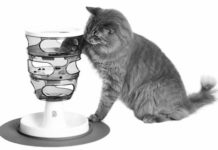A Push to Screen for Earlier Diagnosis of Hypertension
A Push to Screen for EarlierDiagnosis of HypertensionCatWatch has previously reported that hypertension in humans can damage the heart and arteries, and cause stroke, kidney damage and vision loss. The Lancet journal predicted that the risk of becoming hypertensive during a lifetime exceeds 90 percent for people in developed countries. Even more alarming, it cautioned that Screening is not done systematically, and the diagnosis is often made at a late stage when target organ damage…
Study Finds Higher Risk of Diabetes in Dry Food
The debate over whether dry cat foods high carbohydate count causes diabetes continues. In the latest development, a study at the Swedish University of Agricultural Sciences found an increased risk of diabetes mellitus (Type 2) - which resembles the same type found in people - in normal-weight cats on dry food.
Short Takes: April 2017
Hundreds of projects are underway across the U.S. and perhaps thousands worldwide using citizen scientists. Theyre volunteers who collect information, usually in cooperation with professional scientists, in fields from computer science to medicine, ecology, outer space and beyond. Rather than the big breakthrough, the results of scientific studies often can indicate whats ineffective in treatment. That was the case when Craig Webb, DVM, Ph.D., at Colorado State University led a clinical trial of a diabetes mellitus treatment.
A Warning on Human Skin Cancer Cream
The Food and Drug Administration is warning owners, veterinarians, healthcare providers and pharmacists of the risk of pets illness and death associated with the topical human cancer medication fluorouracil. Initial reports cited the death of five dogs who accidentally ingested the prescription cream, which is also sold as Carac, Efudex and Fluoroplex. While the FDA has yet to receive reports involving cats, the agency expects cats to be extremely sensitive to the cream, which is used to treat pre-cancerous and cancerous skin growths.
Could Supplementation Help Cats With Diabetes?
Diabetes mellitus commonly strikes older, obese male cats. In its most common feline form, the pancreas doesnt produce any or enough insulin, a hormone that regulates the flow of glucose used as fuel for a variety of metabolic processes. The patient lacks nourishment, and excess glucose remains in the bloodstream, potentially damaging organs and blood vessels.
Short Takes: March 2017
Scientists have identified many factors that affect a species survival - from diet and weather to the size of breeding groups to social relationships. However, researchers at Michigan State have found that some wild cats dont necessarily respond to the same evolutionary pressures as other mammals, including humans and primates.
An Anonymous Grant to Evaluate GI Diseases
A grant from anonymous donors in memory of their cat, Speckles, will support feline research to distinguish between gastrointestinal disease caused by inflammatory bowel disease (IBD) and lymphoma. The project will assess fecal bacteria and if significant difference is found, it may lead to a less invasive, more accurate diagnosis.
Do You Fit the Picture of the Typical Owner?
Did you get your cat from a shelter instead of a referral from a friend or relative? Does he sleep with you? Is he a senior? You just might be the typical cat owner in the U.S., at least among those described in the American Pet Product Associations latest owners survey.
Batman the Four-Eared Cat Finds Fame and New Home
A black cat with four ears named Batman made national news only hours after being made available for adoption at the Western Pennsylvania Humane Society in Pittsburgh. Just when you think youve seen it all, a four-eared cat comes in the door! says Hala Nuemah, shelter managing director.
Cat Whiskers; Feline Heart Health
If youve ever been tempted to trim your cats whiskers, it would be best to resist the impulse. Whiskers are essential to cats navigation. They also serve as early warning systems and barometers of mood, says Leonie Richards, BVSC, head of general practice at the University of Melbourne Veterinary Hospital. The Winn Feline Foundation has awarded a grant to research at-home use of Holter monitoring in cats with hypertrophic cardiomyopathy (HCM).
Food Puzzles for Cats; Going to the Vet
In advocating environmental enrichment for indoor-only cats, it calls food puzzles foraging devices. The journal warns that, if not managed appropriately, indoor life can contribute to health problems such as obesity and diabetes, and problem behaviors such as house-soiling and attention seeking. Nutrition is the most pressing subject that cat owners want to discuss with the veterinarian, but the same survey, conducted at the end of summer, found that 60 percent of owners dont regularly take their cat to the veterinarian.
A National Database Can Help Find Clinical Trials
If youre considering a clinical trial for your cat as an option for treatment, youll find extensive listings on a new database from the American Veterinary Medical Association, www.avma.org/findvetstudies. The AVMA Animal Health Studies Database is the first of its kind for owners and researchers.

